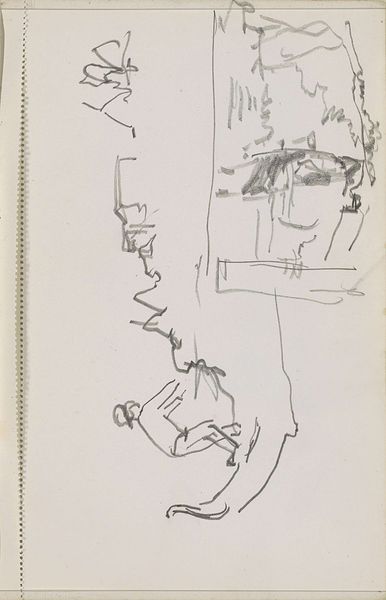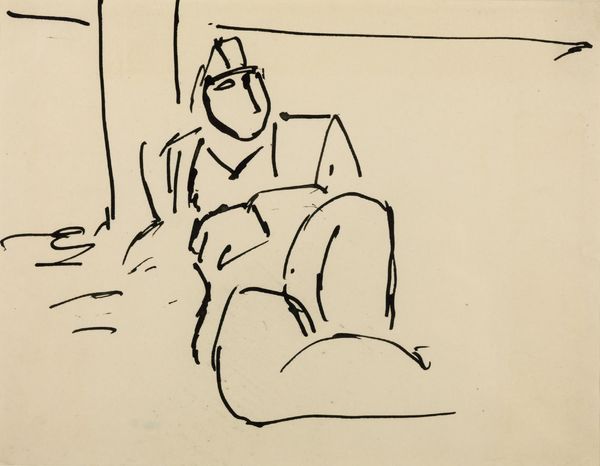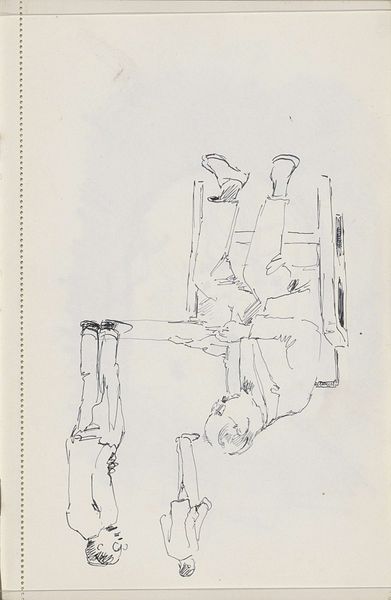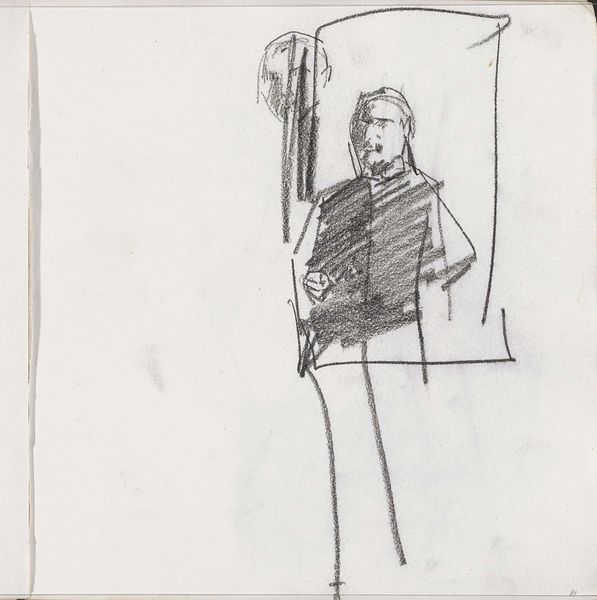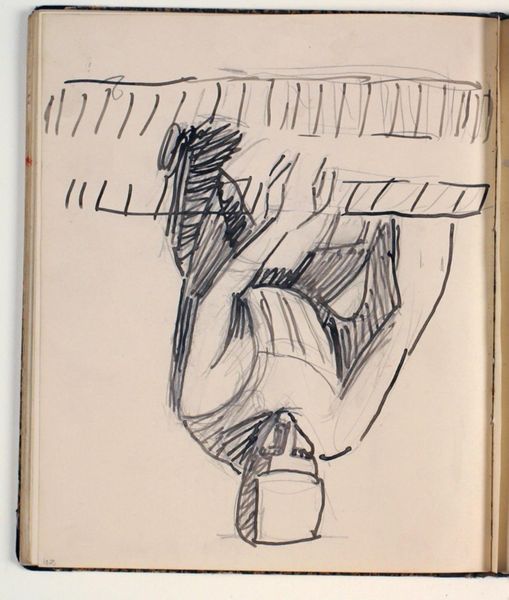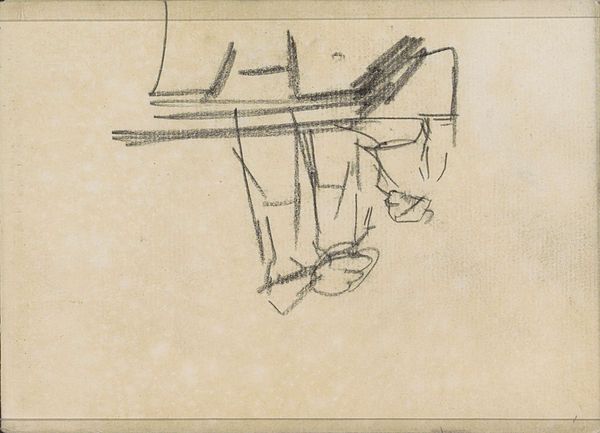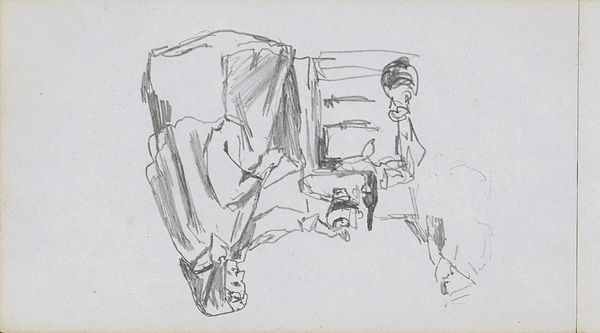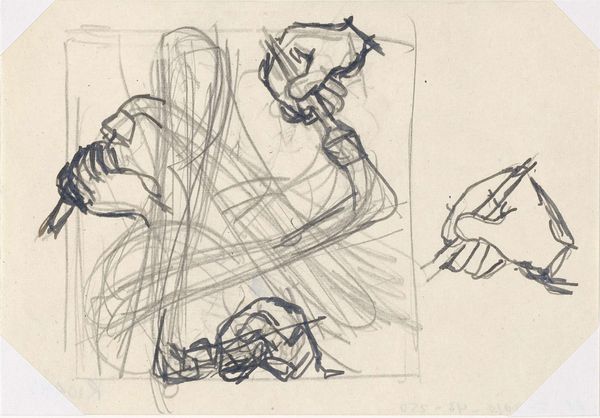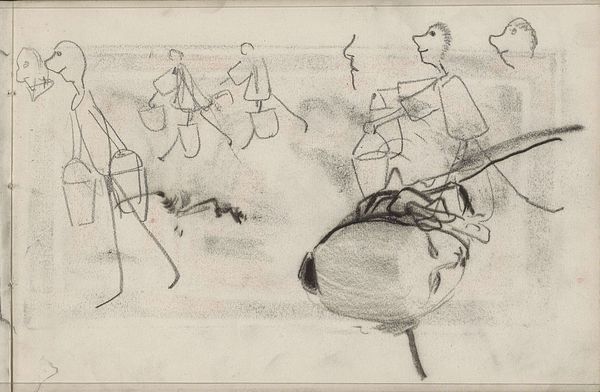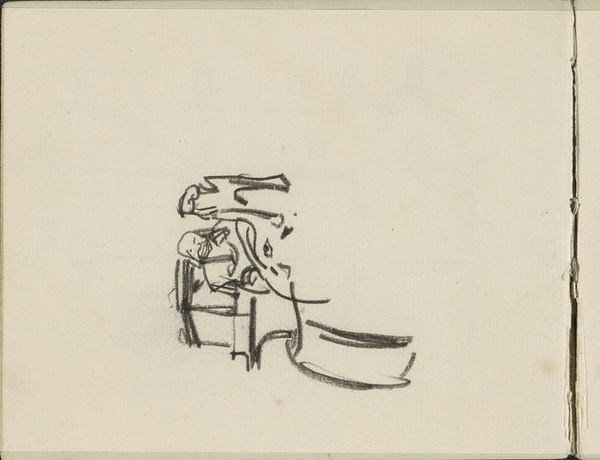
Copyright: Rijks Museum: Open Domain
Curator: Looking at this pencil drawing, 'Zittende man,' or 'Seated Man,' by Isaac Israels, I'm immediately struck by its dynamism despite the subject's stillness. It’s part of the Rijksmuseum's collection, dating from 1875-1934. What’s your impression? Editor: The stark lines against the plain background feel rather lonely, don't you think? The sketch quality is very intimate; like catching a private moment in a bustling world, possibly within the framework of patriarchal expectations and public spaces. Curator: Absolutely. Israels often captured fleeting moments of modern life, and this sketch really speaks to that. His engagement with impressionism reflects the spirit of the era, the artist who documented the world and daily experience, a bourgeois man looking ordinary. Editor: Considering the context of Impressionism—especially how it engaged with social issues—I'm also pondering if we can extend this idea of recording, thinking about labor relations and even masculine presentation, to unpack the political implications inherent to the seemingly innocuous scene, particularly within class dynamics. Is the posture, relaxed as it might look, encoding other tensions or possibilities in this drawing? Curator: It’s interesting how you position class as a main tension; such positioning reminds of Daumier’s approach to printmaking in portraying members of Parisian society at the same period. Although Israels depicts the figure relaxed, there is in fact also a kind of detachedness there. This detachment, however, does invite closer reading, questioning what is it precisely that it shields the man against? Is the drawing attempting at neutrality, therefore also inevitably failing, for lack of additional cues that suggest either judgment, commentary, or indeed neutrality? Editor: That's fascinating. You're suggesting the lack of commentary becomes its own commentary? The drawing, by virtue of its bareness, engages viewers like us to explore the many socio-political threads woven into a historical narrative, allowing for new discussions to rise. It encourages discussions to rise, revealing deeper contexts that echo well into current day interrogations about gender, race, identity, and class representation in art. Curator: Exactly! We might question the sketch, its artistic merit and role and its inherent assumptions but at the same time appreciate how it invites, perhaps unknowingly, further engagement on pressing discussions, Editor: Thank you. Curator: You're welcome.
Comments
No comments
Be the first to comment and join the conversation on the ultimate creative platform.
